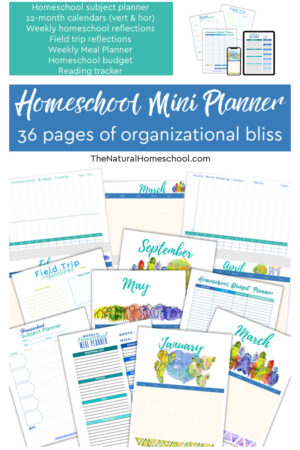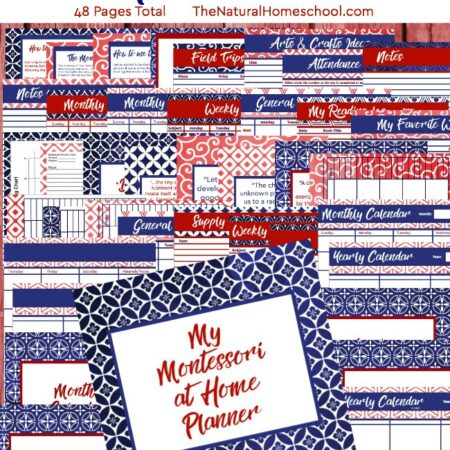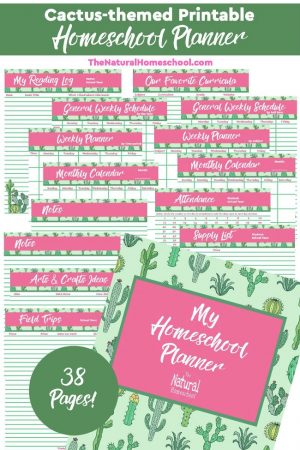Reading is a gateway to endless learning and imagination, especially for teenagers at a critical stage of personal and intellectual development. However, in the digital age, books compete with screens for teens’ attention. Cultivating a love for reading in them can be challenging but highly rewarding. Here are five strategies for parents and educators to encourage teens to embrace the world of books.

Essential Books for Natural Homeschooling
Books focusing on natural and holistic approaches to child development and education are vital for parents. They provide insights into how children learn and grow in harmony with nature, emphasizing the importance of a nurturing and organic learning environment.
For parents seeking additional academic support, resources like EssayPay.com and services that offer to do my assignment can be helpful, offering tailored assistance that aligns with these natural and holistic educational philosophies.
“Last Child in the Woods” by Richard Louv – This seminal work discusses the concept of “nature-deficit disorder” and underscores nature’s importance in children’s healthy development. Louv’s insights are invaluable for parents wanting to incorporate more outdoor and nature-based learning into their homeschooling approach.
“The Well-Trained Mind” by Susan Wise Bauer and Jessie Wise – Though not exclusively focused on natural homeschooling, this book offers a comprehensive guide to classical education at home, with a structure that can easily incorporate natural learning elements.
“Montessori from the Start” by Paula Polk Lillard and Lynn Lillard Jessen -This book offers insights into the Montessori method, focusing on early childhood development and how to create a nurturing environment that fosters natural learning.
“The Whole-Brain Child” by Daniel J. Siegel and Tina Payne Bryson – This book provides a fascinating look into the developing brain. It offers practical strategies for nurturing children’s minds at different developmental stages, emphasizing balanced, holistic growth.
Last Child in the Woods: Saving Our Children from Nature-deficit Disorder by Richard Louv (1-Jun-2010) Paperback The Well-Trained Mind: A Guide to Classical Education at Home
The Well-Trained Mind: A Guide to Classical Education at Home Montessori from the Start: The Child at Home, from Birth to Age Three
Montessori from the Start: The Child at Home, from Birth to Age Three
Curriculum Guides and Lesson Plans
Finding the right curriculum and lesson plans is crucial for effectively implementing a natural homeschooling approach.
“The Nature Connection” by Clare Walker Leslie – An excellent resource for parents, this workbook is filled with nature-based activities and lesson plans, making integrating the natural world into daily learning easier.
“Home Learning Year by Year” by Rebecca Rupp – This guide provides a detailed curriculum for each grade, emphasizing holistic learning processes that can be adapted to include more nature-focused activities.
“The Outdoor Classroom in Practice, Ages 3–7” by Karen Constable – This guide provides a comprehensive framework for educators to develop an effective outdoor learning environment with practical activities and lesson plans.
The Nature Connection: An Outdoor Workbook for Kids, Families, and Classrooms Home Learning Year by Year: How to Design a Homeschool Curriculum from Preschool Through High School
Home Learning Year by Year: How to Design a Homeschool Curriculum from Preschool Through High School The Outdoor Classroom in Practice, Ages 3–7: A Month-By-Month Guide to Forest School Provision
The Outdoor Classroom in Practice, Ages 3–7: A Month-By-Month Guide to Forest School Provision
Activity Books
Activity books are a treasure trove for hands-on learning, offering many ideas for nature-based activities, experiments, and arts and crafts.
“The Outdoor Classroom” by Karen Miller – Packed with creative and educational outdoor activities, this book is perfect for parents looking to enrich their homeschooling experience with hands-on nature learning.
“The Curious Nature Guide” by Clare Walker Leslie offers creative and fun ways to explore and appreciate the natural world, with activities suitable for all ages.
“Nature’s Art Box” by Laura C. Martin – This book is a treasure trove of art projects using natural materials, perfect for fostering creativity and an appreciation for the environment.
Top Websites and Online Resources
The internet is a rich source of educational content, especially for those focusing on nature and the environment.
National Geographic Kids – This site is a goldmine of information on wildlife and geography, offering engaging content that can spark a child’s interest in the natural world.
Project Learning Tree – Dedicated to environmental education, this website provides many activities and lesson plans that can seamlessly integrate into a homeschooling curriculum.
BBC Earth – This website provides a wealth of resources about the natural world, with stunning imagery and fascinating facts, making learning about nature an exciting adventure.
Online Courses and Workshops
Online courses and workshops can provide structured learning in specific areas, often focusing on science and nature.
Coursera and Khan Academy – These platforms offer a range of free courses that can be adapted for homeschool use. Many of their courses focus on science and nature, making them ideal for natural homeschooling.
Outschool – A platform offering a variety of live online classes for children, with many courses focusing on nature, science, and the arts, taught engagingly and interactively.

Must-Have Materials and Supplies
In natural homeschooling, it’s essential to use supplies that are kind to the environment. Here are some suppliers and types of sustainable, eco-friendly school supplies:
Green Apple Supply – Specializes in environmentally friendly educational products, including recycled paper products, biodegradable pens, and non-toxic glue.
Eco-Kids: Offers a range of eco-friendly art supplies, like natural clay and dough, made from safe, natural ingredients.
Wisdom Supply Co. – Provides zero-waste school supplies, promoting sustainability in education with products like refillable pens and plastic-free packaging.
Science and Nature Exploration Tools
For hands-on learning in science and nature, consider these tools and kits:
Handheld Microscopes – Compact and easy to use, these are perfect for exploring the micro-world in gardens, parks, and forests.
Weather Station Kits – Great for teaching meteorology and climate studies, these kits can include tools like thermometers, barometers, and rain gauges.
Nature Exploration Kits – Often include binoculars, bug-catching tools, and plant identification guides, ideal for young naturalists.
Compound Microscope,40X-2500X Research Class Professional Microscope,WF10x and WF25x eyepieces, Dual LED Lighting and Two-Layer Mechanical Stage,Microscope Logia 7-in-1 Wi-Fi Weather Station with Solar | Indoor/Outdoor Remote Monitoring System, Temperature Humidity Wind Speed/Direction
Logia 7-in-1 Wi-Fi Weather Station with Solar | Indoor/Outdoor Remote Monitoring System, Temperature Humidity Wind Speed/Direction Adventure Kidz – Outdoor Exploration Kit, Children’s Toy Binoculars, Flashlight, Compass, Whistle, Magnifying Glass, Backpack. Great
Adventure Kidz – Outdoor Exploration Kit, Children’s Toy Binoculars, Flashlight, Compass, Whistle, Magnifying Glass, Backpack. Great
Art and Craft Materials
Engaging in creative projects is a vital part of natural homeschooling. Here are some recommendations for genuine, non-toxic art supplies:
Natural Earth Paint -Offers eco-friendly paint kits made from natural earth pigments.
Bamboo Art Tools – Sustainable and durable bamboo brushes and tools are excellent for art projects.
Recycled Paper and Fabric – Using recycled materials for art projects reduces waste and teaches kids about repurposing and sustainability.
Integrating Technology with a Natural Approach
Balancing technology and nature can enhance the homeschooling experience without overshadowing the importance of real-world interactions. Some tools and apps that complement natural learning include:
iNaturalist – A community science app that helps identify plants and animals, encouraging exploration and data collection.
Star Walk – An astronomy app that makes stargazing more informative and engaging, perfect for night-time educational activities.
Google Earth – Offers a global perspective, allowing children to explore different ecosystems and geographical features virtually.

Tips for Selecting the Right Resources
Choosing the right resources is critical to a successful homeschooling experience. Here are some tips:
- Align with Educational Values: Select resources that reflect your family’s values and approach to education. For instance, if outdoor learning is a priority, look for resources encouraging exploration and nature studies.
- Consider Learning Styles: Every child is unique. Some may prefer hands-on activities, while others might learn better through reading or visual aids. Choose resources that cater to your child’s learning style.
- Flexibility and Adaptability: Opt for resources adapted to different ages and skill levels, especially if teaching multiple children.
- Encourage Critical Thinking and Creativity: Select resources that challenge your children to think critically and solve problems creatively.
- Stay Informed and Updated: The world of educational resources is constantly evolving. Stay informed about new tools, materials, and methods to enhance your homeschooling experience.
Conclusion
In conclusion, embarking on the natural homeschooling journey is rewarding and challenging, demanding thoughtful resources that resonate with a family’s educational philosophy and a child’s learning style. The books, websites, and materials highlighted in this article are carefully chosen to support and enrich this unique educational approach.
From eco-friendly supplies that teach sustainability to hands-on science and nature exploration tools and technology that harmoniously integrates with natural learning, these resources aim to foster an environment where learning is as organic and dynamic as nature.
You might also like:
-
Sale!

Reusable Printable Homeschool Mini Planner (36 pages)
$18.00$9.99 Add to cart- Moth & Butterfly Life Cycle Book List & Resources that Will Blow your Mind
- The Most Amazing Resources and Book List of Land Transportation
- Great US Presidents Book List, Printables, Resources & more
- Book Lists on Frog Life Cycle, Parts of a Frog for Kids, Resources, Printables & more
- Diorama Printable Ideas, Book List and Resources
- Hibernation, Adaptation and Migration Book List and Free Resources
Latest Posts
- Discovering the Magnificence of the Montessori Environment
 Aesthetics in Montessori environment serve several purposes beyond just aesthetics. They play a key role in establishing an atmosphere that satisfies the senses, aids in the development of order in young brains, and organically fosters a love of beauty.
Aesthetics in Montessori environment serve several purposes beyond just aesthetics. They play a key role in establishing an atmosphere that satisfies the senses, aids in the development of order in young brains, and organically fosters a love of beauty. - Levelling Up Your Career
 Levelling up your career is a lot easier if you pay attention and follow these four easy steps.
Levelling up your career is a lot easier if you pay attention and follow these four easy steps. - Craft Activities for Kids ~ Paper Weaving Projects
 In this post, we are looking at some really fun paper weaving projects that your kids will find a lot of fun!
In this post, we are looking at some really fun paper weaving projects that your kids will find a lot of fun! - Inspired by Montessori Curriculum for Toddlers PDF (225 pages)
 Let’s be completely honest for a minute, guys, in regards to the best Montessori curriculum for toddlers PDF. I think we can all agree that homeschooling a toddler or having a toddler at home while we homeschool our older kids can be as easy or as daunting as you want…
Let’s be completely honest for a minute, guys, in regards to the best Montessori curriculum for toddlers PDF. I think we can all agree that homeschooling a toddler or having a toddler at home while we homeschool our older kids can be as easy or as daunting as you want… - Online Learning Takes a Stand Against Traditional Educational Methods
 Online Learning Takes a Stand Against Traditional Educational Methods
Online Learning Takes a Stand Against Traditional Educational Methods





















Leave a Reply